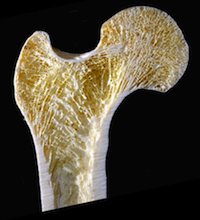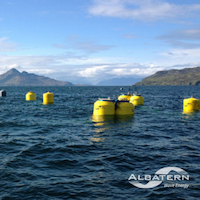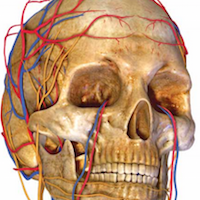ARCHER Case Studies
Forecasting the dispersion of volcanic ash and gas.
The National Centre for Atmospheric Science (NCAS), the British Geological Survey (BGS), the UK Met Office (UKMO) and the Icelandic Met Office (IMO) work under a Memorandum of Understanding on collaborative projects aimed at improving response to volcanic events. A dispersion modelling exercise led by the UKMO was conducted in June 2019 to improve the partners’ awareness of the volcanic ash dispersion modelling capabilities at each institution and test the ability of each institution to run its dispersion models. Read more...
Predicting aircraft jet noise.
The world’s civil aircraft fleet almost doubles in size every 20 years, and the noise generated by these aircraft is having an unprecedented impact on communities. Plans to expand major airports will further exacerbate this problem if noise emissions are not significantly tackled. To meet the FlightPath 2050 targets set out by ACARE (Advisory Council for Aviation Research and innovation in Europe)1, the perceived noise emission from flying aircraft in 2050 needs to be reduced by 65% relative to the capabilities of typical new aircraft in 2000. Read more...
Improving cloud modelling for better weather and climate predicution.
Current weather and climate models struggle to resolve the complex details of the interactions between clouds and their environment.
A team of researchers from the University of St Andrews and University of Leeds had previously developed a new numerical model, MPIC (Moist Parcel-In-Cell), which deals with the dynamics of clouds. These researchers have now incorporated this code into a community code used by atmospheric scientists around the UK, the MONC (Met Office NERC Cloud) framework.
Read more...
LAMMPS: Enabling new DNA simulations on ARCHER
LAMMPS is specifically designed to be easily modifiable and extendable, which gives it a vital advantage over other popular biomolecular simulation software. The core of LAMMPS runs efficiently on both single processor machines and high-performance computing (HPC) facilities, which makes it ideal for many scientific areas of research including biology. Owing to its global user community new features are regularly implemented. Read more...
Understanding Ice Nucleation and Growth
The formation of ice affects us every day – whether weare preserving food, curing diseases, or predicting the weather. Understanding nucleation and growth,the processes by which water freezes into ice, is critical. However, experiments looking at the formation of ice are incredibly challenging. Researchers have used ARCHER to simulate how ice forms. These simulations give an unprecedented insight into the formation of ice on a molecular level. Read more...
Preventing Oil Spills Caused by Gas Hydrates
Research using ARCHER has helped us to understand the mechanisms responsible for the performance of anti-agglomerants - compounds that can prevent blockages in oil and gas pipelines caused by gas hydrates. We have used ARCHER to conduct simulations, to discover how the structure of AAs contributes to their properties. The results will help develop new effective inhibitors for oil & gas pipelines. Read more...
Exploiting the Shapeshifting Properties of Proteins to Design New Drugs
For a drug to be effective, it needs to stick strongly to its intended protein. But for a drug to be safe, it needs to stick only to that protein, and not to the many healthy proteins that are also present. Proteins come in lots of unique shapes so, in theory, researchers could just find the drug that matches one single protein. In practice, however, it’s not this simple. Proteins are not static; they can change their shape dramatically in response to their environment. This makes it difficult to reliably predict how the drug molecule will interact with the protein. Read more...
Billion-atom simulations of magnetic materials
Magnets are extremely useful in a wide range of industries. In our daily lives, there are magnets in our fridges, headphones, computers, and many more everyday objects. In the industrial world, magnets are key components of many medical imaging devices, data storage technologies, and power generators. Due to the many uses of magnets, we are always looking for new, better magnetic materials to improve the technologies they enable. This has been difficult, however, as the simulation tools we use to model magnetic materials are limited Read more...
Discovering dinosaur footprints
Studying extinct animals is important, as it can help to further our understanding of evolutionary biology and provide a wider context to our knowledge of animals alive today. Learning more about the history of our planet and its previous inhabitants can provide us with more details about how animals evolved - and potentially what evolutionary pressures may have caused these changes. Read more...
A new frontier for Material Science: Designing nanocomposites in a virtual laboratory
Nanocomposites are a new frontier in material science. Existing nanocomposite materials are highly prized due to their unique properties. From the discovery of new medicines, through helping bones to heal faster, to uses in the car industry, nanocomposites have applications in lots of areas of our daily lives. However, the discovery of new nanocomposite materials has until now relied on a trial-and-error process. Researchers at UCL have used ARCHER to create a virtual laboratory to investigate how the atomic structure of nanocomposite materials affects their properties. This should reduce the need to use costly and time-consuming trial-and-error methods to discover new nanomaterials. Read more...
Understanding changes in the Ganges river delta under climate change
Much of the landscape of Bangladesh is dominated by rivers. Around 700 distinct rivers flow through the country, with the largest of these being the Ganges, Brahmaputra, and Meghna. Together, these rivers form the Ganges-Brahmaputra delta, also known as the Bengal delta - the largest river delta in the world. Researchers have used ARCHER to create a model of the river channels in this delta, which will allow simulation of properties such as water levels and salinity under a range of possible future climates. This will allow them to predict which areas may be affected by changes in the delta, preserving farmland and identifying safe areas of drinking water. Read more...
A personalised approach to computational heart modelling
Researchers at King's College London, the Medical University of Graz and Oslo University Hospital have applied ARCHER to simulating individual patients' hearts in order to better understand patient physiology, pathology, and treatment outcomes. Personalised modelling provides another step towards personalised medicine in which patient selection and patient treatment will be tailored to individual needs and specific patient conditions. Read more...
Heart simulation videos from this project are available on the ARCHER
UK National Supercomputing Service YouTube channel.
Video 1 -
Simulation of the spread of activation across the heart of a patient
suffering from dyssynchronous heart failure.
Video 2 -
Images of the heart generated by cardiac magnetic resonance imaging.
Video 3 -
Personalised simulation of electrical activation in 20 patients'
hearts.
Interface structure prediction for future materials for novel technologies - a route to "Interfaces by Design"
"Interfaces by Design" has the potential to bring crucial advances to the understanding and design of interfaces with unique electronic, optical and mechanical properties in future materials. This may lead to novel technologies in many sectors of industry, in particular the microelectronics and optoelectronics industry. Read more...
Understanding how bones develop and respond to disease and the use of implants
Scientists at the University of Hull have developed their simulation software to utilise ARCHER to model complete bones or large sections of bones. This offers the exciting opportunity to model skeletal development and adaptation. The potential benefits are enormous, ranging from a better understanding of both the fundamental biomechanics of bone and the cause and effects of musculoskeletal conditions, to better implant design. Read more...
Albatern: Numerical Simulation of Extremely Large Interconnected Wavenet Arrays
Albatern develop novel interconnected offshore marine renewable energy devices. The goal of this SHAPE project was to begin the development of a physics code capable of simulating a large scale Wavenet array (100 or more devices) using HPC technology to extensively parallelise the solution. The simulation capability is intended to build on Albatern's in house modelling expertise, allowing the prototyping of arrays that are currently not possible to simulate due to their scale. Computer visualisation and power prediction of large scale arrays are also vital to the success of Albatern's efforts to continue investment in the technology. To facilitate development, the project was split into an algorithm development task and a HPC implementation task. The completed HPC simulation method will capture fundamental dynamic phenomena associated with arrays of wave energy devices while providing a time and cost effective development technology. Read more...
Aircraft Research Association Ltd
The ARCHER National UK Supercomputing Service enabled ARA to perform its largest CFD simulation ever: the simulation would never have taken place if ARA had had to rely on its in-house computing resource. The simulation results for the civil aircraft landing-gear geometry, alongside the wind-tunnel data taken in a companion experimental test,has allowed the numerical approach to be validated and additionally insight into the complex flow physics obtained. Computations such as this will pave the way for increased use of CFD in landing-gear assembly design, leading to improved designs which are more environmentally friendly. Read more...
Extreme Weather Forecasting with Extreme Computing
This project aims to improve the performance of the IFS forecadting model used by the European Centre for Medium-Range Weather Forecasts (ECMWF). ECMWF is exploring the use of Fortran2008 coarrays - this is possibly the first time that coarrays have been used in a world leading production application within the context of OpenMP parallel regions. ARCHER is one of the few facilities in the UK that can run coarray enabled code in an efficient manner. Read more...
HPC Is Brain Surgery: Cray's XC30 Supercomputer Shows Future Clinical Benefits as Development Tools Partner Helps Application Reach Petascale
The HemeLB research group at University College London (UCL) has an exciting vision, one that will change the way neurosurgeons operate in the future and improve outcomes for patients. The group develops software to model intracranial blood flow - and a collaboration with Cray and Allinea Software, a Cray development tools partner, is helping them address the challenges of application development at high scale. UCL's HemeLB software applies computational fluid dynamics to model blood flow around cerebral vessels and simulate pressure at points of weakness, such as aneurysms. Using data from MRI scans of a patient's blood vessels, the group anticipates that simulations will one day help them decide the best clinical option for individual patients. Read more...
ARCHER Flexes Its Muscles on Code_Saturne
Code_Saturne is a multi-purpose CFD application well suited to the fluid flow simulations required by the nuclear reactor work (see sidebar). As part of the ongoing CFD code improvement effort and in preparation for more extensive production runs, scientists from EDF Energy and STFC Daresbury Laboratory tested the performance of Code_Saturne on ARCHER. Read more...

























